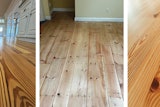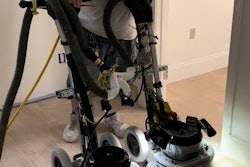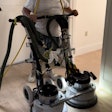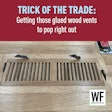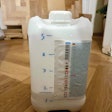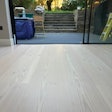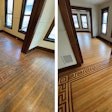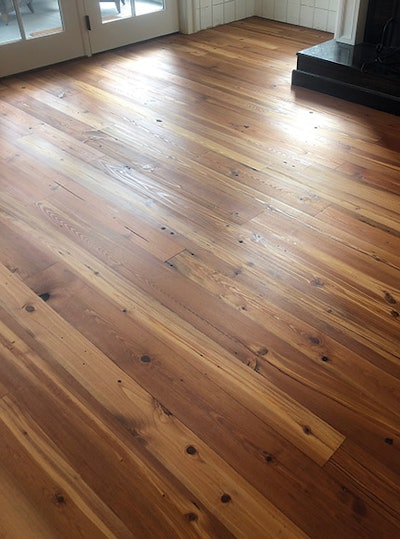
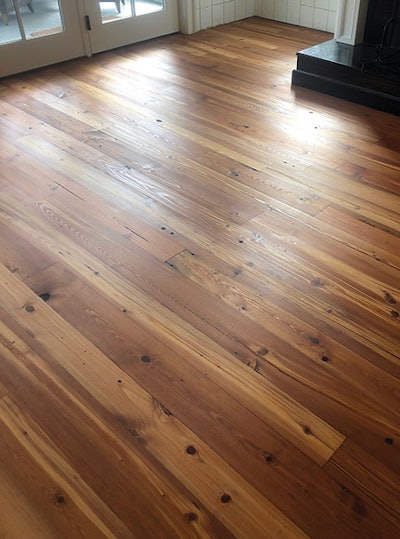 On this engineered heart pine floor, we filled all the knot holes with Woodwise Ebony filler. Photo courtesy of Specialty Flooring.
On this engineered heart pine floor, we filled all the knot holes with Woodwise Ebony filler. Photo courtesy of Specialty Flooring.
I'm installing a reclaimed wood floor. What do I do about the open knots?
Kevin Minton, owner/operator at Specialty Flooring in Ridgeland, S.C., answers:
Many times customers buy a reclaimed floor because of the character of it, including splits and knots. They like it being rustic but they don't want dirt traps, so you need to find out exactly what they do and don't want filled—many times they won't want the smaller nail-sized holes filled, for example. In our floors, we cull out all knots and splits that are larger than the size of about a quarter.
Once we know which knots and splits they want filled, we have three options. If the floor is going to be stained, the choice is cut-and-dry: We use a filler that takes stain. Because we don't often stain a reclaimed floor, however, that's the option we use the least. The other two options are to make the knots and cracks black by using either a regular wood filler (we use Woodwise's Ebony) or an epoxy (we use a marine-grade epoxy by West System). We tend to leave the decision about which one to use in the hands of the customer. Because these floors have so much color variation, we won't try to use a filler that matches the floor color—you'd have to be Picasso and be there for a week trying to get the color right for all the knots.
Given the choice, we'll use regular wood floor filler, because epoxy is a very costly way of going about it. If you do use epoxy, keep in mind that sometimes you may have to do two or three applications of it because it will flow out underneath the floor to some degree. If the customer wants clear epoxy, realize that whatever is on the subfloor—your Aquabar underlayment, your adhesive, whatever—will show right through the epoxy. In those cases we'll put a little bit of paint on the substrate, let it dry and then put in the epoxy.
RELATED FROM THE AUTHOR: What I've Learned Working With Reclaimed Wood Flooring









